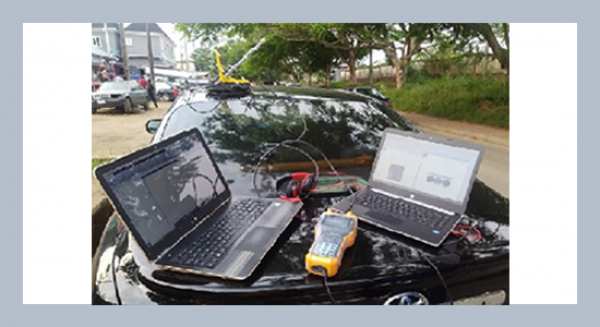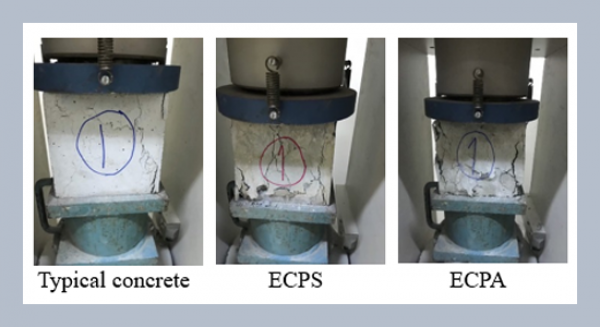Folasade Abiola Semirea,b,*, Rosmiwati Mohd-Mokhtara, Temidayo Victor Omotoshoc, Widad Ismaila, Norizah Mohamada, and J.S. Mandeepd
a School of Electrical and Electronic Engineering, Universiti Sains Malaysia, Engineering Campus, Nibong Tebal, Malaysia
b Department of Electronic and Electrical Engineering, Ladoke Akintola University of Technology, P.M.B. Ogbomoso, Oyo State, Nigeria
c Department of Physics, Covenant University, Ota, Ogun State, Nigeria
d Department of Electrical and Electronic Engineering, Universiti Kebangsaan Malaysia, Bangi, Selangor, Malaysia
REFERENCES
- [1] Ippolito, Jr. L.J. 1986. “Radio wave propagation in satellite communication”. Third Ed., Van Nostrand Reinhold Company, New York.
- [2] Pratt, T., Bostian, C.W., and Alnutt, J.E. 2003. “Satellite Communication”. Third Ed., Wiley: New York.
- [3] ITU–RP. 618-10. 2001. Propagation Int. J. Appl. Sci. Eng., 2012. 10, 3 Data and prediction methods Requirement for the design of Earth-space. Telecom. Sys. Geneva.
- [4] Kenneth, C.A. 1990. Observation of geographical variability of the attenuation rate in rain. Proceedings of URSI Commission F Open Symposium on Regional Factors in Predicting Radiowave Attenuation due to Rain, Rio de Janeiro.
- [5] ITU-R Rec. P. 838-3. 2007. Specific attenuation models for rain for use in prediction methods. Telecom. Sys. Geneva.
- [6] Moupfouma, F. and Martin, L. 1995. Modelling of the rainfall rate cumulative distribution for the design of satellite and terrestrial communication systems. International Journal of Satellite Communications, 13, 1: 105-115.
- [7] Joo, H.L., Choi, S.Y., Pack, K.J., and Ha, H.E. 2002. Conversion of rain rate distribution for various integration time. “Proceedings of URSI Commission F Wave Propagation and Remote Sensing, Maastricht”. The Netherlands, August 2002.
- [8] Ong, J.T. and Zhu, C.N. 1997. Effect of integration time on rain rate statistics for Singapore. Proceedings of 10th International Conference on Antennas and Propagation, Singapore, 14th - 17th of April, 1997.
- [9] Maitra, A., Das, S., and Shukla, A.K. 2009. Joint Statistics of Rain Rate and Event Duration for Tropical location in India. India J. Radio Space Phy, 38: 353-363.
- [10] Mandeep, J.S., Hassan, S.I.S., and Ain, M.F. 2008. Rain rate conversion for various integration time for equatorial and tropical climates. International Journal of Satellite Communication, 26: 329-345.
- [11] Segal, B. 1986. The Influence of Rain Gauge Integration Time on Measured Rainfall Intensity Distribution Functions. of Atmospheric Oceanic Tech, 3, 4: 662-671.
- [12] Burgueno, A.M., Puigcever, M., and Vilar, E. 1988. Influence of raingauge integration time on the rain rate statistics used in microwave communication. Annals of Telecommunications, 43, 9-10: 522-527.
- [13] ITU-RP. 530-13 2005. Propagation Data and Prediction Methods required for the design of Terrestrial line-of-sight system. Telecom. Sys. Geneva.
- [14] Lin, S.H. 1997. National long term rain statistics and empirical calculate of 11GHz microwave rain attenuation. The Bell Sys. Techn. J. 56, 9: 1581-1604.
- [15] Khamis, H., Din, J., and Abdul-Rahman, T. 2004. Determination of Rain Cell Size Distribution For Microwave Link Design in Malaysia. RFM, Selangor, Malaysia.
- [16] Pan, Q.W. and Bryant, G.H. 1994. Effective Rain-cell Diameters and Rain-column Heights in the Tropics. Electronic Letter. 30, 21: 1800-1802.
- [17] Goldhirsh, J. and Musiani, B.H. 1992. Dimension Statistics of Rain Cell Cores and associated Rain Rate Isopleths Derived from Radar Measurements in the Mid-Atlantic Coast of the United States. Geosci. Rem. Sens., IEEE Transations, 30, 1: 28 – 37.
- [18] Ajayi, G.O. and Ofoche, E.B. 1983. Some tropical rainfall rate characteristic at Ile-Ife for microwave and millimetre wave applications. Clim. Appl. Meteor, 23: 562-567.
- [19] Watson, P.A., Sathiaseelan, V., and Potter, B. 1981. Development of a climatic map of rainfall attenuation for Europe Post graduate school of Electriacl and Electronic Engineering, University of Bradford, U.K., Rep, 300, 134.
- [20] Omotosho, T.V. and Oluwafemi, C.O. 2009. Impairment of radio wave signal by rainfall on fixed satellite service on earth-space path at 37 stations in Nigeria. Atmosp. Solar –Terr. Phy. 71: 830-840.
- [21] Semire, F.A and Raji, T.I. 2011. Characteristics of Measured Rainfall Rate at Ogbomoso, Nigeria for Microwave Applications. J. of Telecommunications and Information Technology, 2, 2: 85-89.
- [22] Aydin, K. and Daisley, S.E.A. 2002. Relationship between rainfall rate and 35-GHz attenuation and differential attenuation: modelling the effects of raindrop size distribution canting and oscillation. Geosci. Rem. Sens., IEEE Transactions, 40, 11: 2343-2352.















